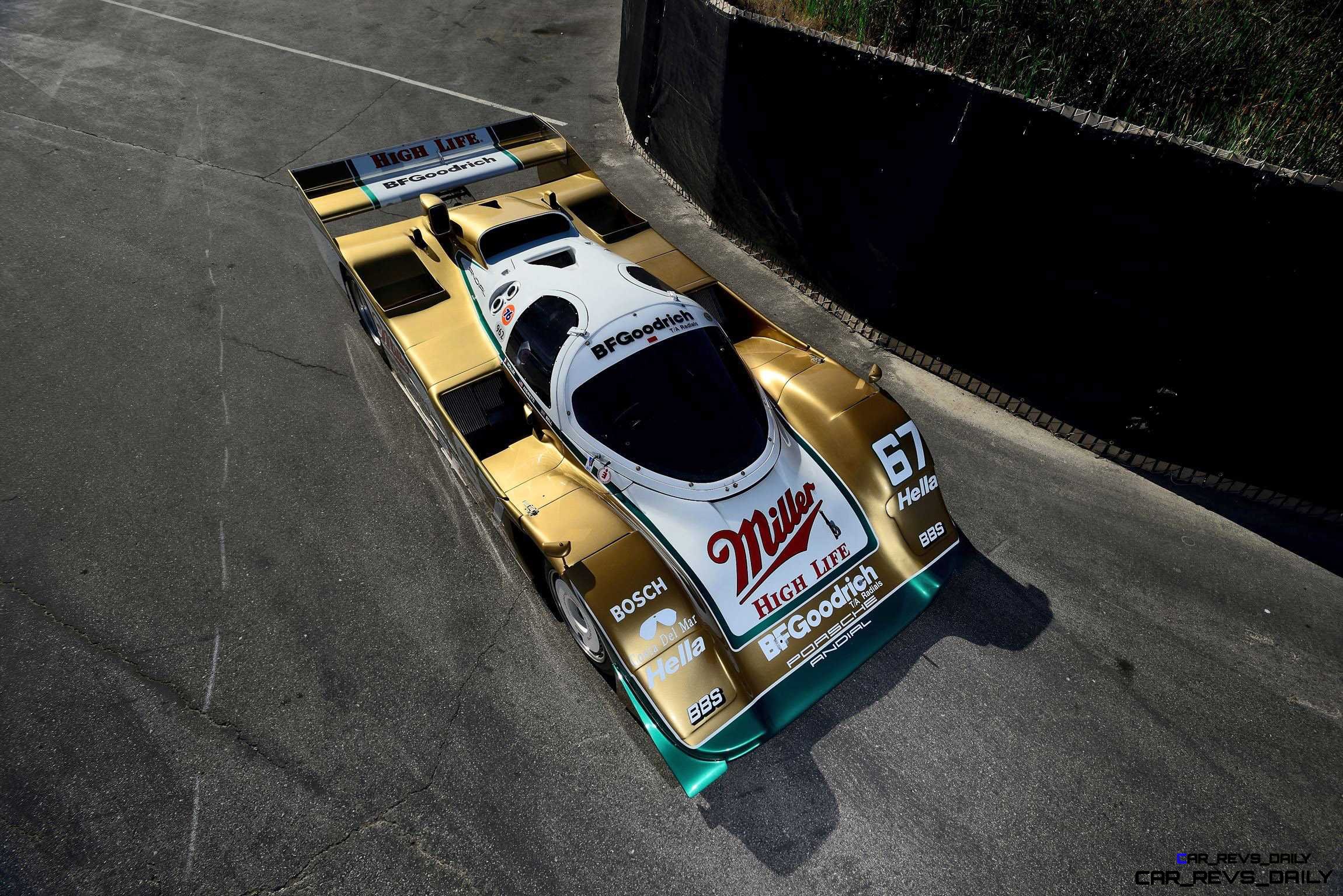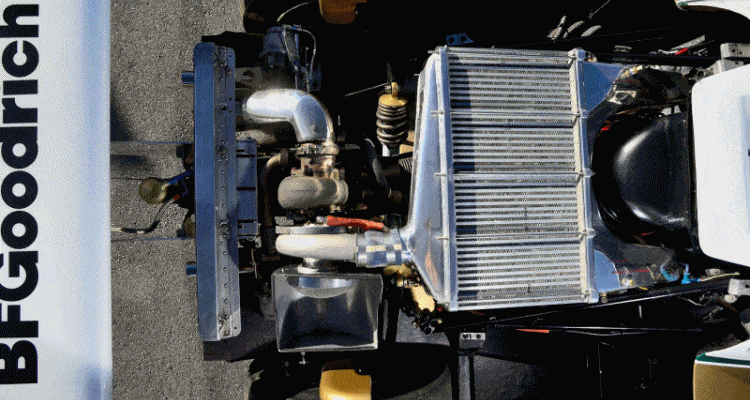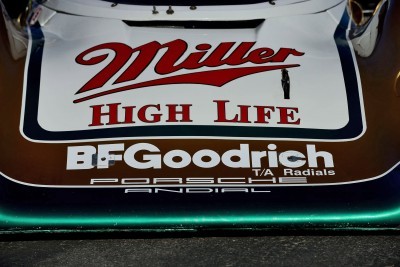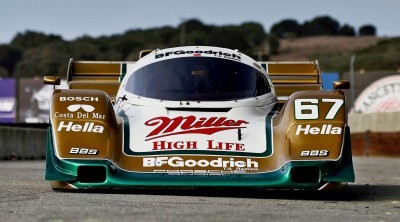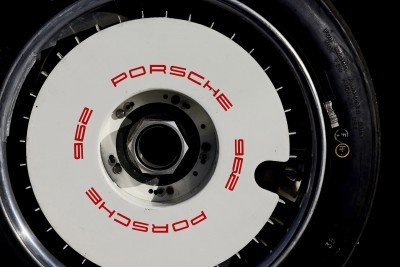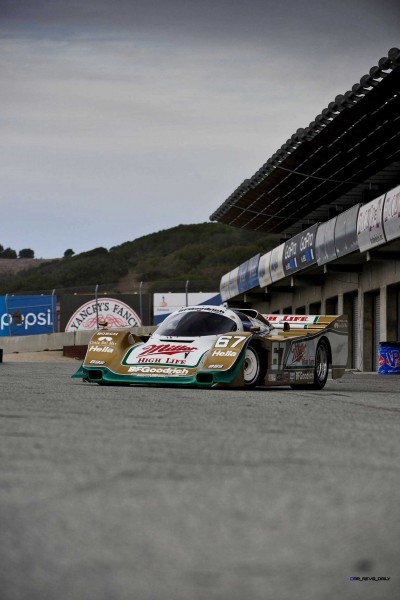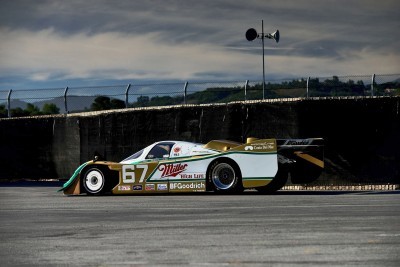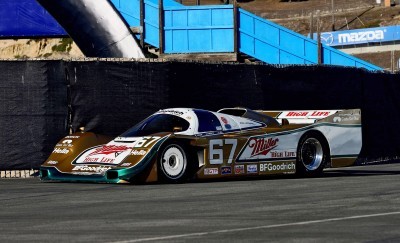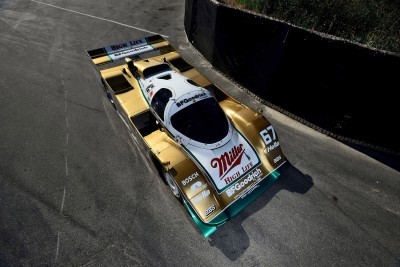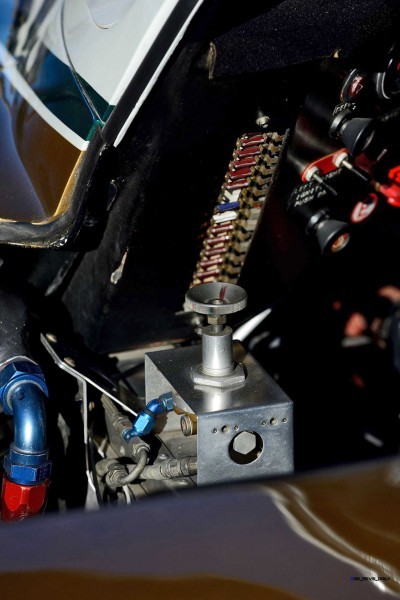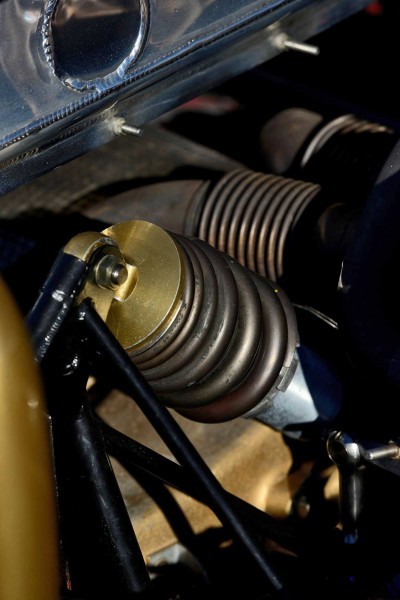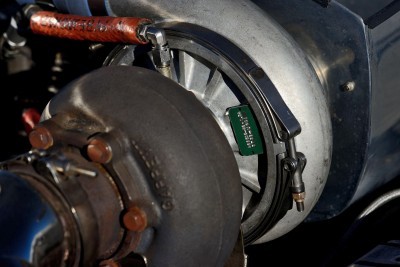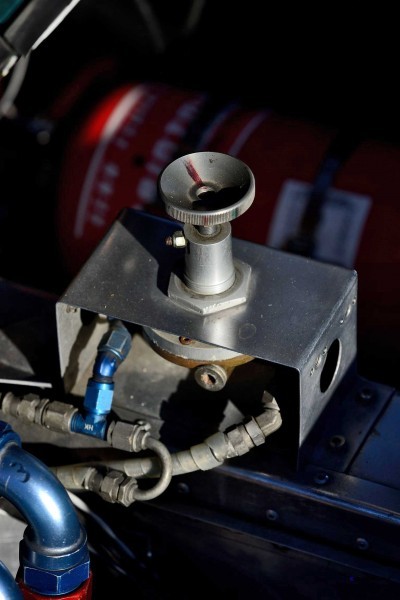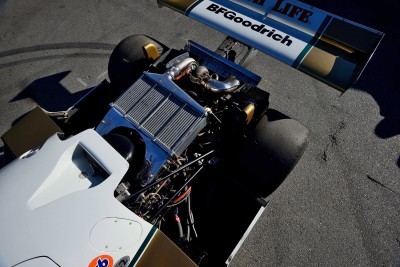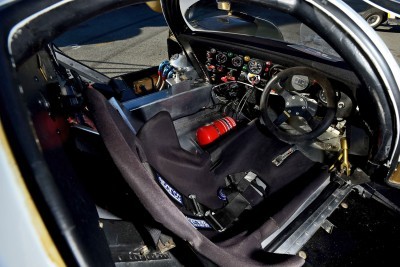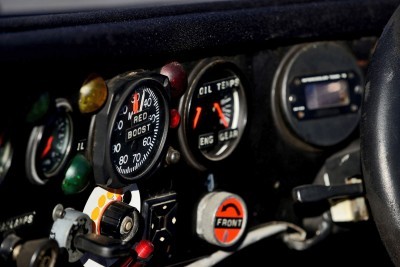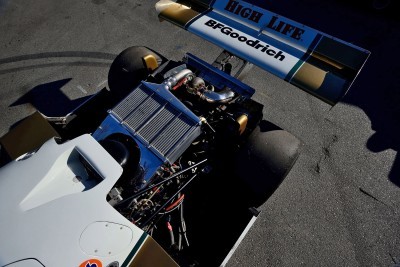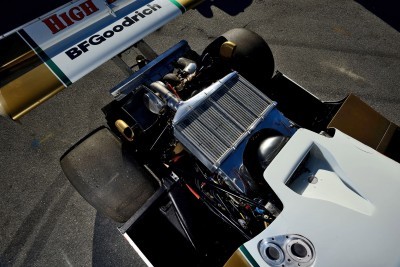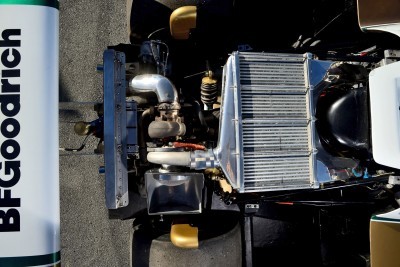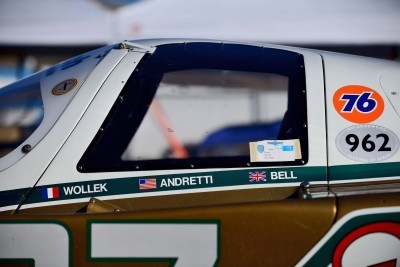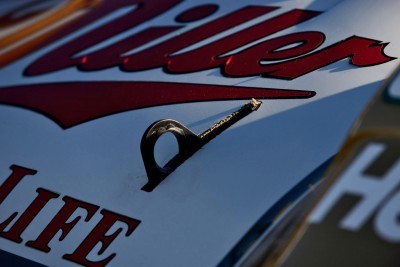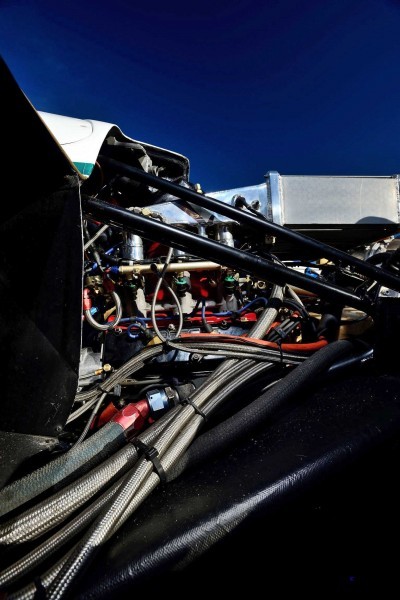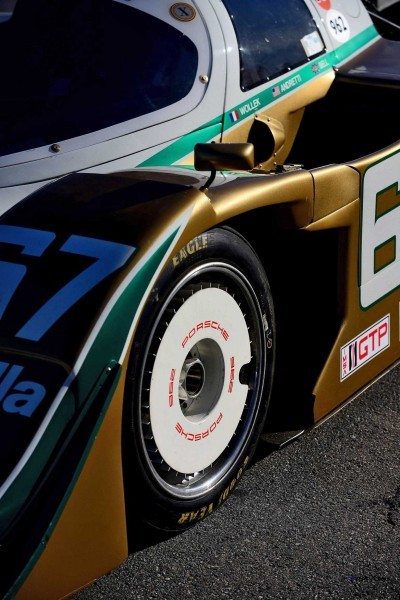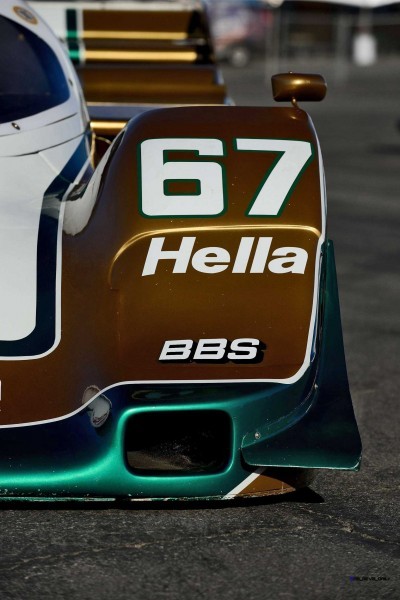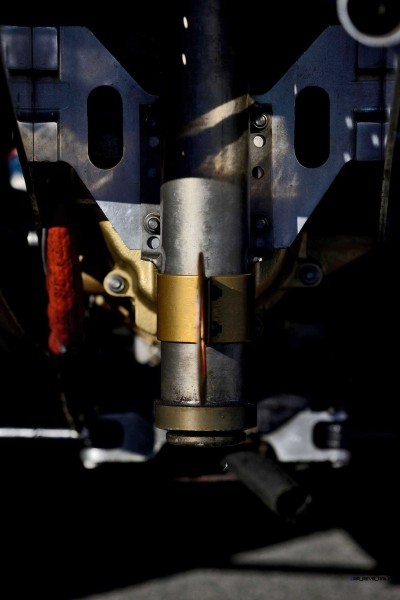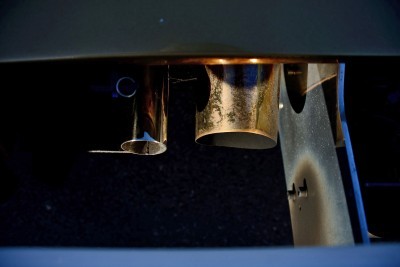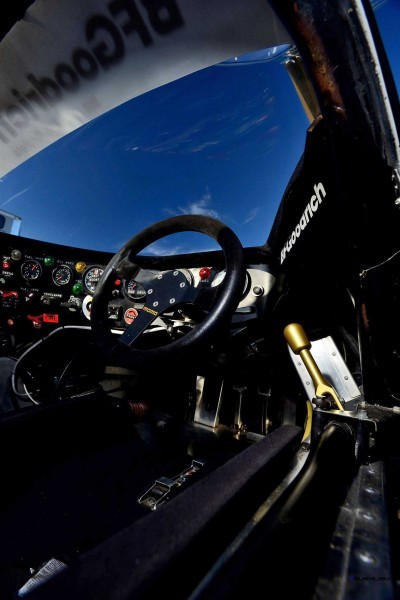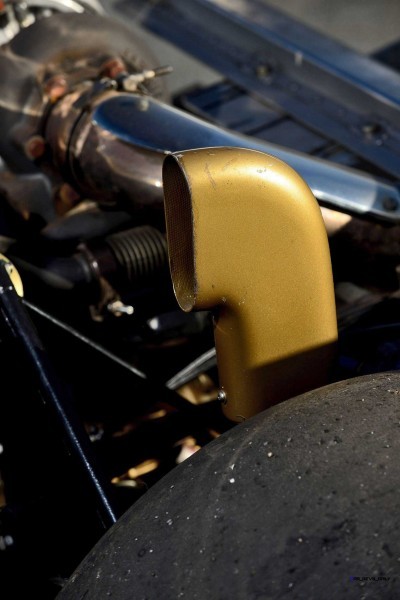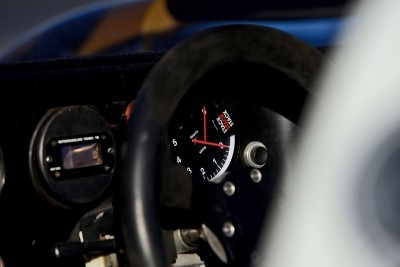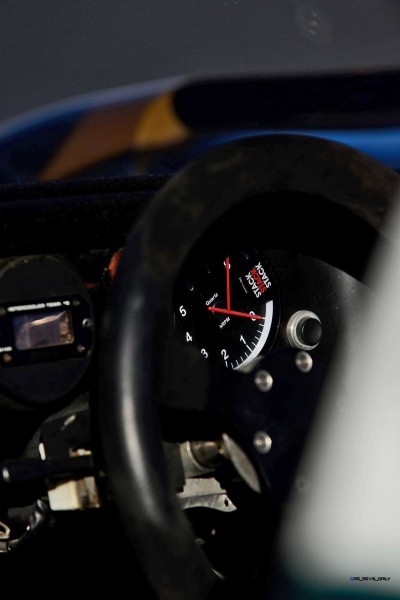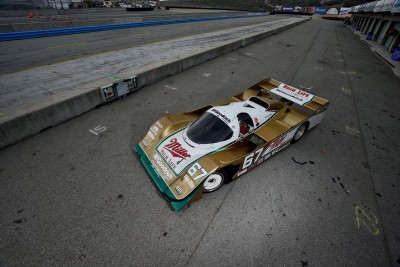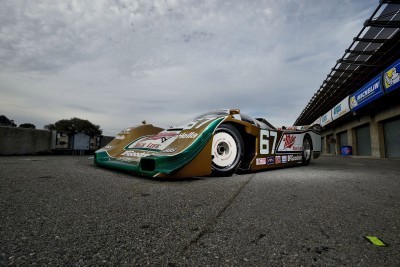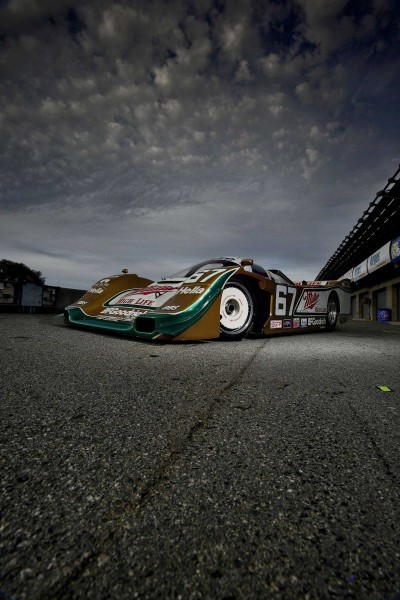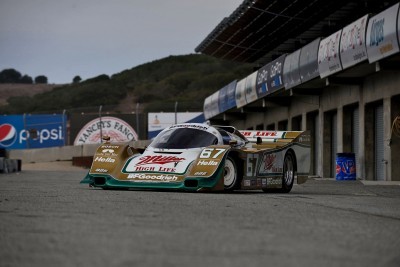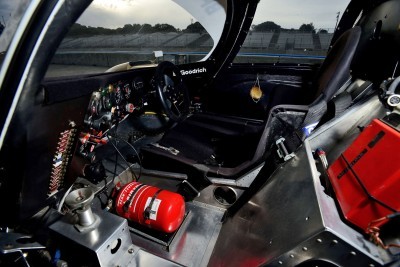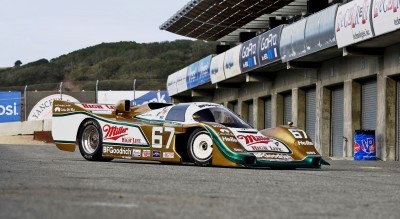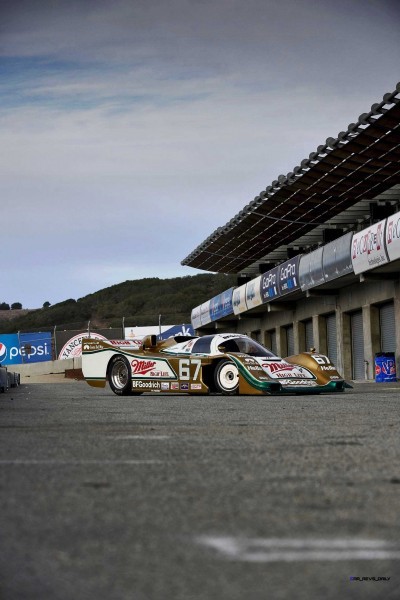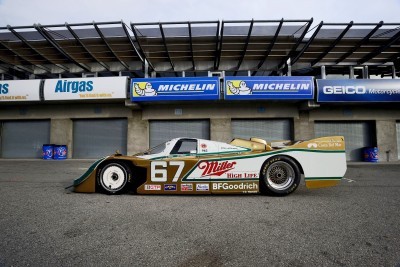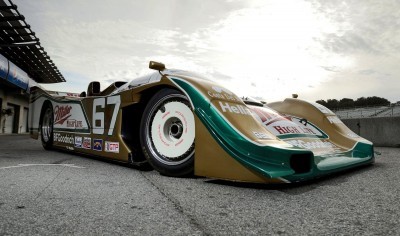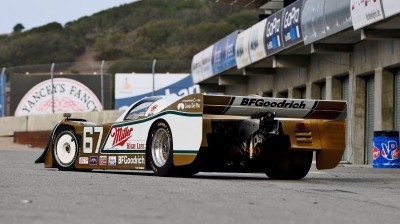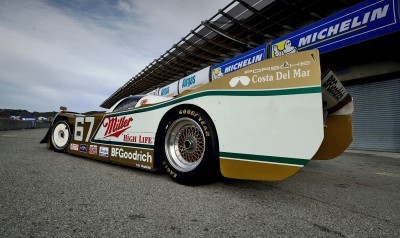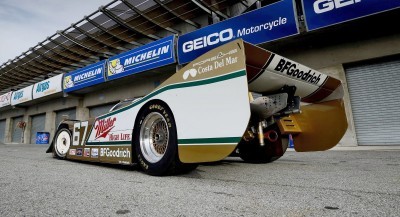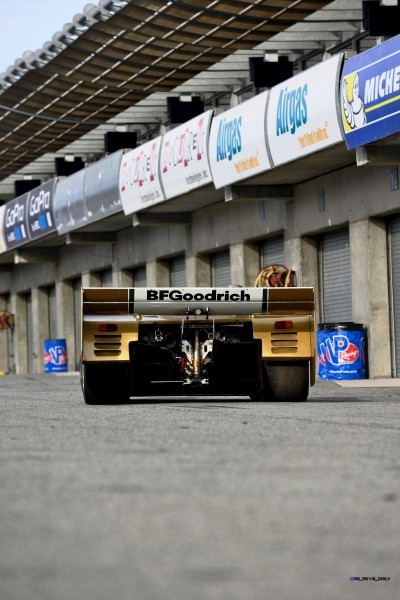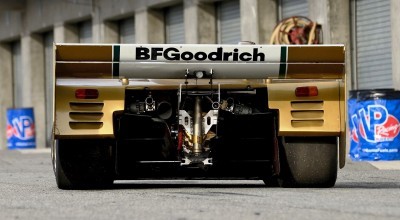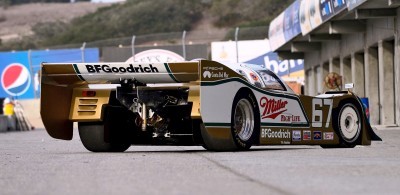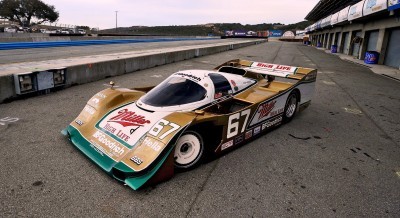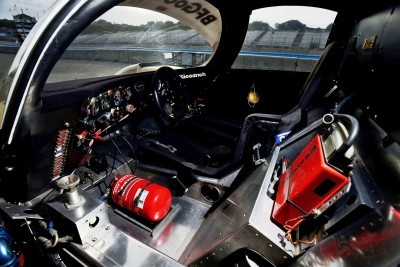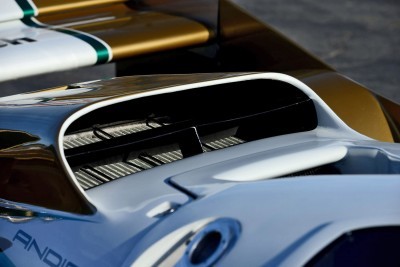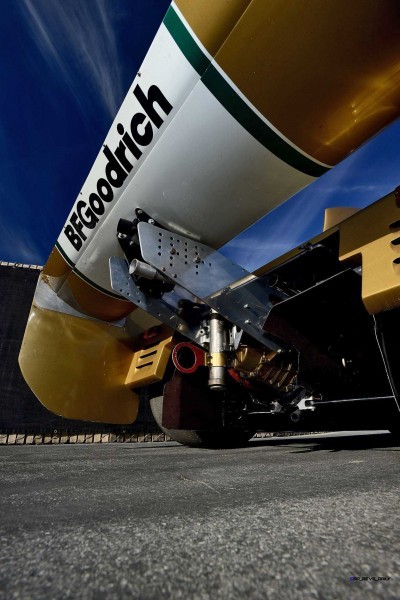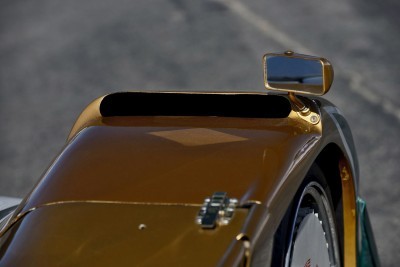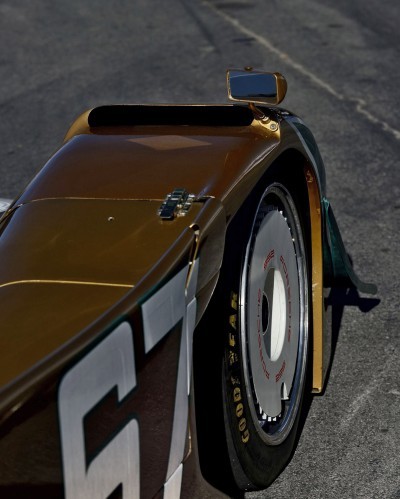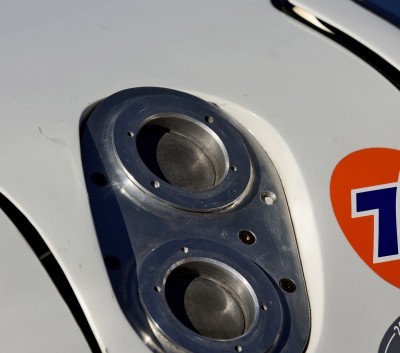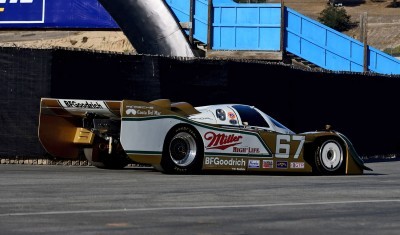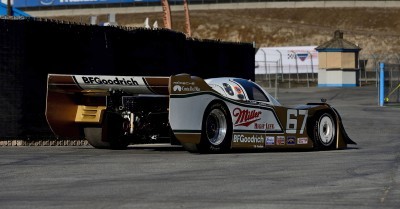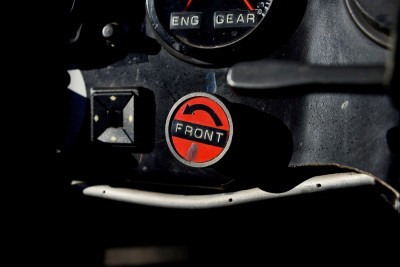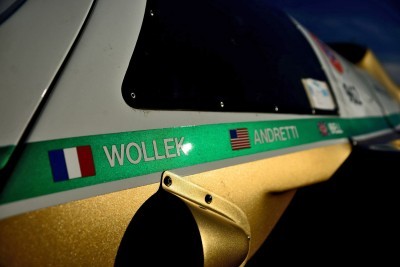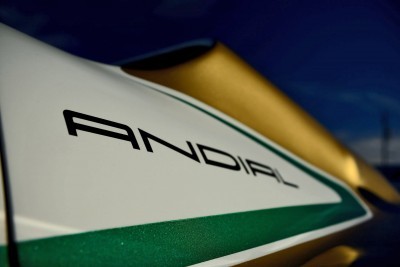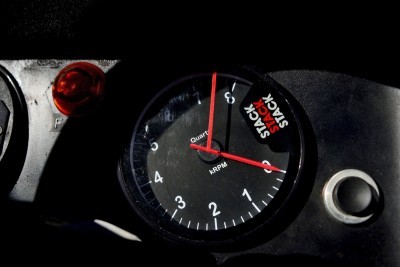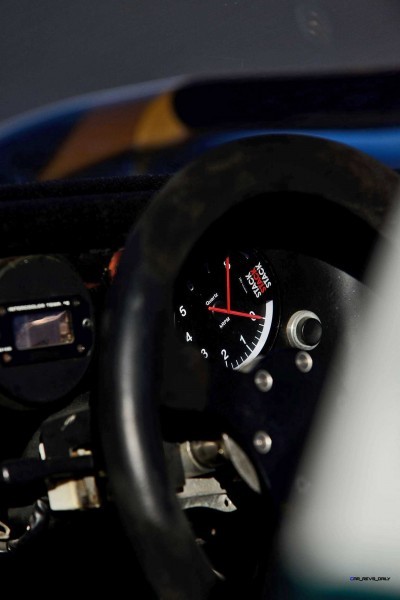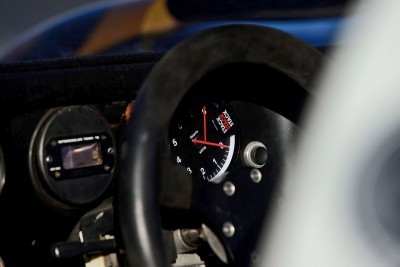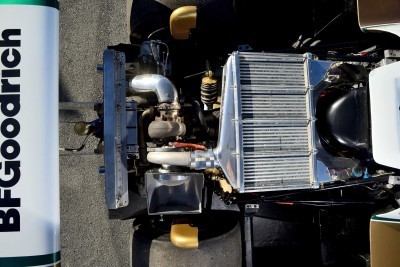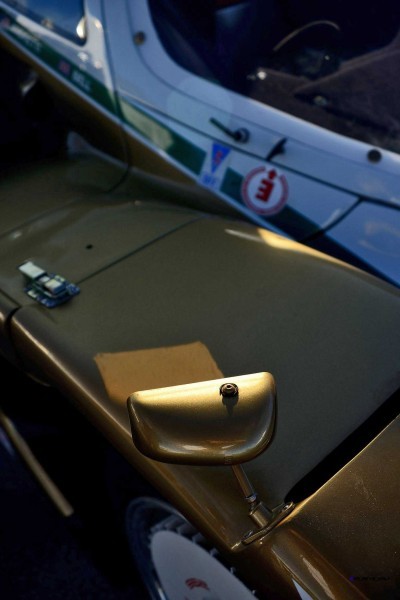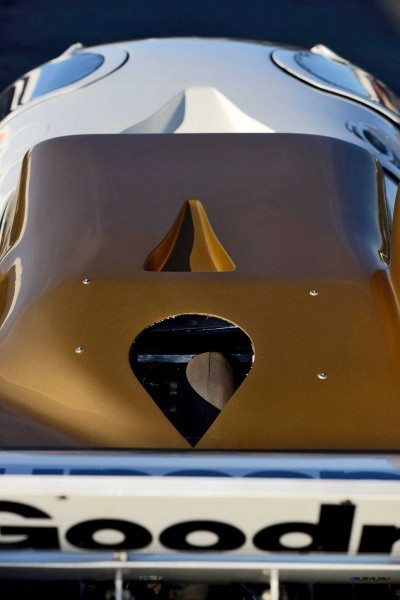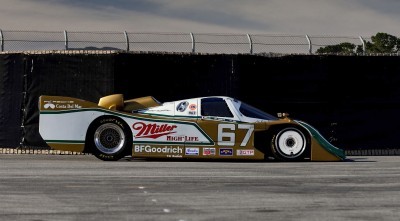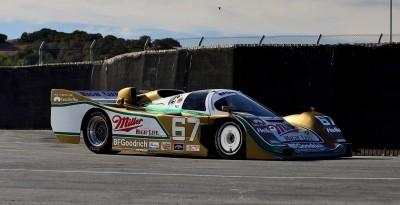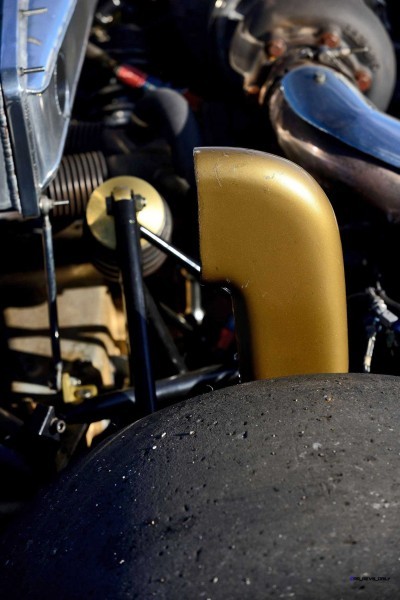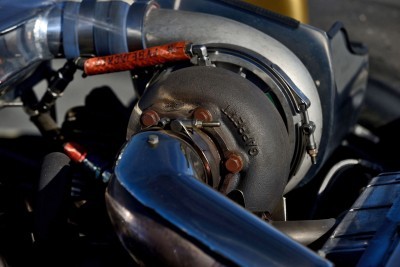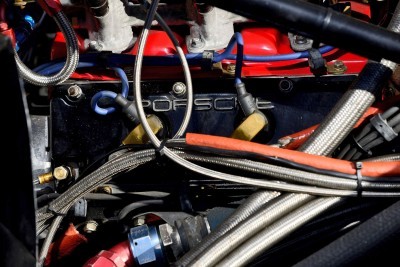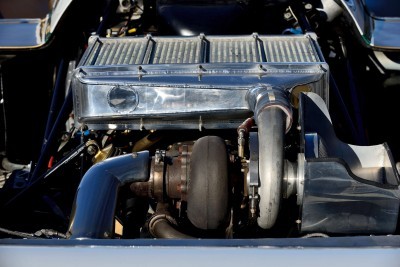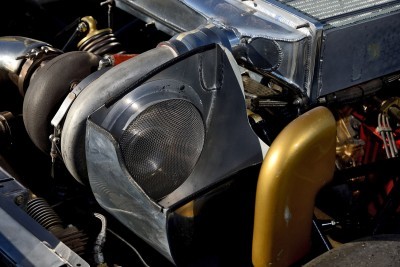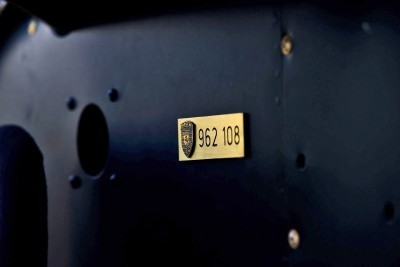 The 959 might hold most Porsche glory for taking turbocharging to the next level of performance. But in truth, the turbo racing engine was fine-tuned into a world-beater in the Porsche 962.
The 959 might hold most Porsche glory for taking turbocharging to the next level of performance. But in truth, the turbo racing engine was fine-tuned into a world-beater in the Porsche 962.
This particular example is a racing-winning stunner with a unique Miller livery — shimmery in eighties gold and green over white with Porsche Andial title sponsorship.
The magesty of the 962 is that it was the ultimate evolution of the wedge race profile. Decked out in ductwork and extra intakes all over the bodywork, the 962 and its open-backed design was optimized for 250-mph-plus runs down the Mulsanne — in a way that the modern LMP1 racers are not. The result is an icon in racing lore — available to the highest bidder in a few months time.
Enjoy these 88 stunning preview photos ahead of the January 2016 Mecum auction in Florida.
1989 Porsche 962 Miller High Life Racer
Lot R410// Kissimmee 2016 // Jan 15-24
1989 Porsche 962 Daytona 24 Hour Winner, Driven by Derek Bell
Of the supremely dominant Type 962 racers built by Porsche from 1984 to 1991, this car, chassis number 962-108, was the fastest in period, winning the 1989 Daytona 24 Hours with master endurance racer Derek Bell at the controls for his final 24-hour victory and the 50th win for the 962 in international competition. Campaigned by highly successful Porsche privateer Jim Busby and sponsored by BF Goodrich and the Miller Brewing Company, it prevailed against the onslaught of the factory Porsches, Jaguars and Nissans. Bell has described the car as his favorite Group C Porsche, high praise indeed from the man who drove Porsches to four of his five overall wins in the 24 Hours of Le Mans and three at Daytona, twice winning the World Sports Car Championship in the process.
When the Busby Racing 962 arrived at Daytona in 1989 in its now famous Miller High Life livery, prognosticators had mostly written off the Porsches as no longer competitive, although the marque had won the previous year’s IMSA championship. But the Busby crew had on its side one of the best endurance drivers of all time, five-time Le Mans winner Bell, who with co-drivers Bob Wollek and John Andretti proceeded to steamroll the field. In a precise reversal of the 1988 edition, 962-108 finished in first place just 1:26.65 ahead of the Nielsen/Wallace/Lammers Jaguar XJR9. It was the closest margin of victory in Daytona 24 history, and the third and final win there for the extraordinarily gifted Bell. It was also the 50th win for a Porsche 962 in the model’s history, an event Porsche celebrated in a cleverly worded magazine ad headlined “The Porsche 962. 0to50 in 4.6 years.”
The car’s long list of racing achievements includes eleven top-five qualifying runs through the 1988-89 IMSA seasons, including the pole at Daytona in 1988 where it led most of the race and eventually finished second. During that same period 962-108 finished on the podium five times, including victories in the 1989 Daytona 24 Hours and Palm Beach Grand Prix. Its successes were hard earned, the direct results of the relentless development for which Busby was famous.
Built to IMSA GTP rules with the 3.0-liter air-cooled, single-turbo engine, 962-108 was one of four 962s eventually allotted to Jim Busby Racing. The car’s debut was anything but auspicious. One of two 962s Busby fielded with BF Goodrich sponsorship for the 1985 Daytona 24 Hours, it was assigned to drivers Pete Halsmer, John Morton and Dieter Quester. Halsmer crashed the car at night trying to avoid an errant backmarker, damaging the front suspension and the tub; fortunately, he was unhurt. At first it seemed beyond repair, but further examination revealed that almost every remaining component was reusable.
With Porsche’s approval, Busby hired former Lola Can Am engineer Jim Chapman to build a new tub using honeycomb aluminum and a milled billet aluminum rear bulkhead in place of the factory-spec sheet aluminum unit. Word of Chapman’s project soon reached Porsche ally Al Holbert, owner of competing 962 team Holbert Racing and director of Porsche Motorsport North America. After several attempts to acquire the new tub, named CO1, for his own 962, Holbert reached an agreement with Busby and it became the foundation for Holbert’s 962-HR1.
Chapman then built a second honeycomb tub, named CO2, for 962-108. At the same time, Busby’s old drag racing friend, engine wizard Ed Pink, was extracting more power from the turbocharged flat-6. Pink back-engineered the Bosch Motronic injection system’s controls and performed some internal tweaks, raising output over 80 horsepower to upwards of 830 (Indeed, Busby’s Pink-equipped racers made so much power that IMSA soon mandated restrictor plates on all the 962 Porsches).
Busby and company finally completed the car, then titled 962-108B, in time for the 1987 Daytona 24 Hours. Driven by Busby, Daron Brassfield and Bob Wollek, it retired with engine failure after 89 laps. It remained well in contention for the rest of the season, however, scoring 2nd, 3rd, 4th and two 6th places, but in the August 2 race at Sears Point with Wollek at the wheel, it crashed while in the lead when the right rear tire exploded entering Turn 1, once again damaging the bodywork and tub.
Rebuilt with a third Chapman tub and rechristened 962-108C, the car arrived at Daytona in January 1988 in fresh BF Goodrich livery. Daytona newcomer Mauro Baldi put 962-108C on the pole and shared driving duties with endurance aces Wollek and Brian Redman. The team set the pace for the entire field, ultimately finishing in second place a mere 1:48 behind the number 60 Jaguar. It was a disappointing result for the crew whose car had started from the pole and hammered the field for most of the race, but it was an impressive return for 108C, and more success was on the way.
Development continued. Rear subframe bracing and suspension revisions improved stability and handling, while Gurney Eagle designer Roman Slobodynskj ordered 956-style front bodywork and other changes to increase aerodynamic efficiency. Engine development was also paying dividends, ensuring the Busby Porsches would remain competitive against the Jaguars and insurgent Electramotive Nissan team. Wollek scored two 3rds (one with Baldi co-driving), a 4th and two 5th place finishes over the course of the 1988 season.
The Jaguar and Nissan factory teams had hit their stride, and finding an edge for 1989 was an urgent priority for Busby and crew. With Ed Pink’s engine program bearing more fruit, it was again time to turn to aerodynamics. 108C was radically revised with more front end sculpting and rear bodywork obviously inspired by the Nissans that had dominated the previous season. The most distinctive change was at the rear, where the standard upswept tail gave way to large, flat side-fences to maximize the downforce generated by the rear diffuser. Testing against a sprint-specification factory Shell Dunlop Lightweight 962C showed impressive results from these changes, with 108C running 1.75 seconds per lap quicker at Lime Rock and 2.5 seconds quicker at Road America.
The 1989 Daytona victory in hand, on April 23, 1989, Bob Wollek and John Andretti drove the newly designated 962-108C-2 to the only other Porsche victory in IMSA that year against the prodigious Electramotive Nissans. A number of 3rd, 4th, 5th and 6th place finishes were capped by winning the 1989 Porsche Cup USA.
962-108C-2 was retired at the end of the season and for many years enjoyed a pampered life in a private collection. In 2005 it became a prized centerpiece of the world-class Historic Porsche Collection in England and was immediately reunited with Derek Bell at the Goodwood Festival of Speed. The two appeared together again in 2007 at the Amelia Island Concours d’Elegance, where Derek was the guest of honor. Later that year for Porsche North America they appeared at Brian Redman’s wonderful Rennsport 3 celebration and at Daytona, starring during display laps with the new Porsche RS Spyder.
One of the most popular Porsche 962 racers in the model’s celebrated history and the fastest of them all, 962-108C-2 was driven by some of the greatest talents of the day, including Jim Busby, Rick Knoop, Mauro Baldi, Bob Wollek, Derek Bell, Jochen Mass, John Andretti, Brian Redman and Daron Brassfield. Still festooned in the famous Gold, Green and White Miller livery, 962-108C-2 is an icon from an exciting era in American motorsports and Daytona history.
HIGHLIGHTS
– Chassis no 108C-2
– 1989 Daytona 24 Hour Winner
– 1989 Palm Beach Grand Prix Winner
– 1989 Porsche Cup USA Winner
– Acknowledged as the fastest 962 in period
– Described by Derek Bell as his favorite 962 and driven to his last 24 Hour victory
– Sponsored by Miller and BF Goodrich
– Campaigned by Jim Busby Racing
– 11 top-five qualifying runs and 5 podium finishes during the 1988-89 season
– Qualified first on the pole at Daytona in 1988 and led most of the race but finished 2nd
– Jim Chapman honeycomb tub
– Driven by Derek Bell, Bob Wolleck, John Andretti, Jim Busby, Mauro Baldi, Jochen Mass, Brian Redman and Daron Brassfield
– Retired in 1989 and collector-owned since
– Green, Gold and White Miller livery
– Featured at Amelia Island, Rennsport and Daytona
Kissimmee, January 15-24, 2016/R410_1989 Porsche 962, Photos by David Newhardt, Courtesy of Mecum Auctions/

Tom Burkart is the founder and managing editor of Car-Revs-Daily.com, an innovative and rapidly-expanding automotive news magazine.
He holds a Journalism JBA degree from the University of Wisconsin – Madison. Tom currently resides in Charleston, South Carolina with his two amazing dogs, Drake and Tank.
Mr. Burkart is available for all questions and concerns by email Tom(at)car-revs-daily.com.

